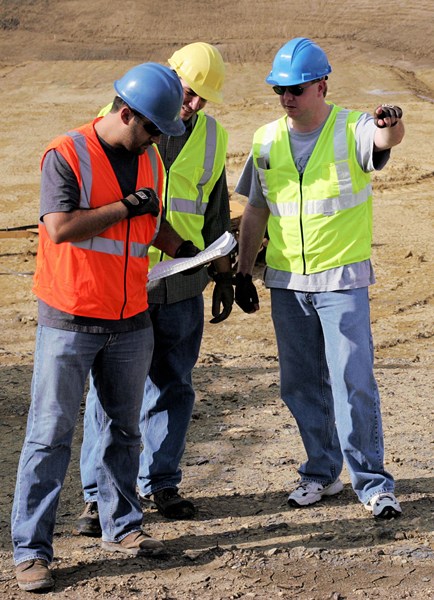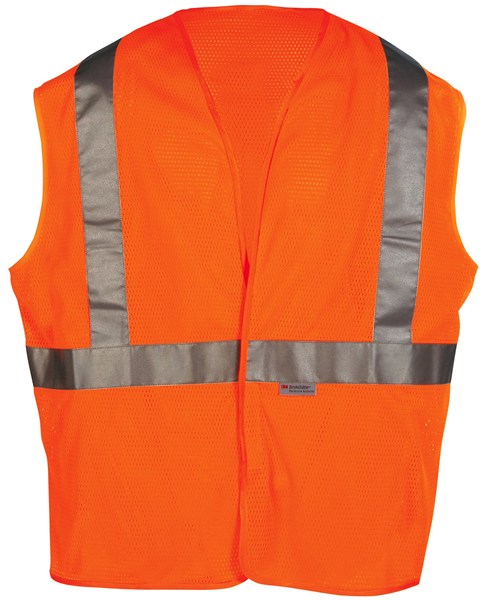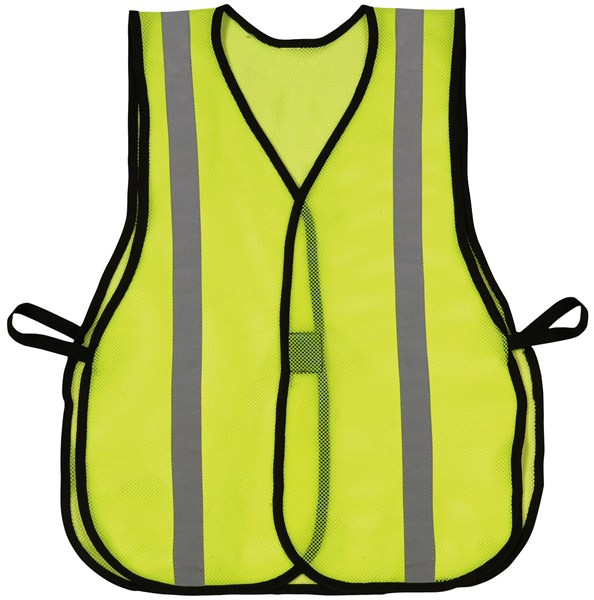LEARN MORE about ANSI standard safety vests & hi-viz clothing
Bold colors and reflective striping on safety vests and apparel draw attention to workers on site 
The American National Standards Institute (ANSI) and International Safety Equipment Association (ISEA) govern the standards for safety vests, reflective safety jackets, and other high-visibility clothing. In the U.S. the Standard for High-Visibility Safety Apparel (ANSI/ISEA 107-2004) provides consistent, authoritative guidelines for selecting and using safety vests and other apparel that provide high visibility under any light conditions by day and under illumination by vehicle headlights in the dark.
ANSI/ISEA 107-2004 is a voluntary standard that offers performance specifications for reflective materials, including minimum amounts, placement, background material, test methods and care labeling. In simplest terms, the ANSI/ISEA 107-2004 standard provides for a high degree of reflective material incorporated into garments, thus improving visibility and safety.
-
ANSI/ISEA 107-2004 specifies three classes of garments based on work environment
Class 3 garments 
Class 3 safety vests and other garments provide the highest level of visibility to workers in high-risk environments that involve high task loads, a wide range of weather conditions, and traffic exceeding 50 mph, where workers need to be as conspicuous as possible. Class 3 garments provide coverage to the arms and/or legs as well as the torso and can include safety pants, safety jackets, coveralls or rain wear. The wearer must be conspicuous and identifiable as a person through the full range of body motions at a minimum of 1280 feet. Class 3 safety vests and other garments must have a minimum of 310 square inches of 2-inch reflective tape, or 12.92 linear feet. No narrower tape is allowed. The standard recommends Class 3 garments for workers such as
-
Accident site investigators
-
Emergency responders
-
Railway workers
-
Roadway construction personnel and vehicle operators
-
Survey crews and flagging crews
-
Utility workers
Class 2 garments 
Class 2 safety vests and other garments are for users who need greater visibility in poor weather conditions and whose activities occur near roadways where traffic speeds exceed 25 mph, backgrounds are complex, and tasks divert attention from approaching vehicle traffic. Class 2 safety apparel must have a minimum of 201 square inches of reflective tape, or 8.375 linear feet of 2-inch tape or 12.2 linear feet of 1 3/8-inch tape. The standard recommends Class 2 safety vests and other garments for workers such as
-
Accident site investigators in less-hazardous situations
-
Airport baggage handlers/ground crew
-
Emergency responders in less-hazardous situations
-
Forestry workers
-
High-volume parking or toll-gate personnel
-
Law enforcement personnel
-
Parking and toll gate personnel
-
Railway workers in less-hazardous environments
-
Roadway construction workers in less-hazardous locations
-
School crossing guards
-
Survey crews near slower-speed traffic
-
Utility workers in less-hazardous locations
Class 1 garments 
Class 1 safety vests and other garments are intended for workers who have ample separation from vehicular traffic that does not exceed 25 mph and in activities that permit full and undivided attention to approaching traffic and ample separation from vehicular traffic against non-complex backgrounds that permit optimum conspicuity. Class 1 safety vests and other garments must have a minimum of 155 square inches of reflective tape, or 6.46 linear feet of 2-inch tape or 9.39 linear feet of 1 3/8-inch tape. The Standard recommends Class 1 garments, which are often safety vests, for workers such as
-
Delivery vehicle drivers
-
Parking service attendants
-
Shopping cart retrievers
-
Sidewalk or roadside maintenance workers
-
Workers in warehouses with equipment traffic
Back